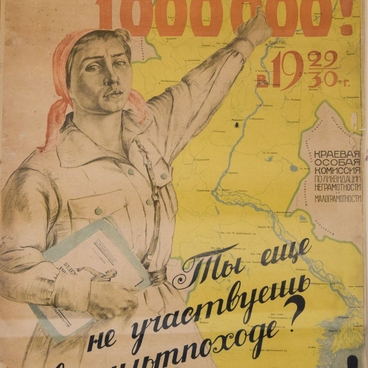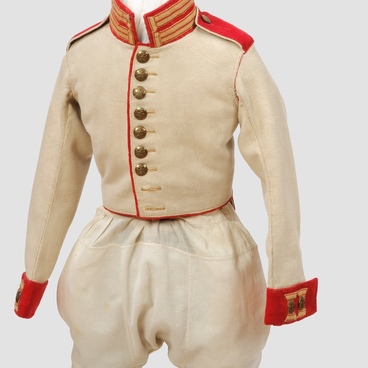Architect Vasily Lukshin’s writing set is exhibited at the museum. He worked in Saratov from 1903. From 1934 until the end of his life, he was the city’s chief architect. Lukshin’s buildings in Saratov include Medvedev Hospital, Buchholz and Grasmick Hospital, school and palace buildings and private homes. His main task was the building of the covered market, which is one of Saratov’s most significant early 20th century buildings. The market was ceremoniously opened in 1916, and it continues to operate successfully to this day.
The writing set is traditionally laid out: all of the necessary utensils are fixed onto a grey marble base. The base houses a pen holder, pencil holder and matchbox. The writing set has bronze fence-like sides and two candlesticks. The pencil holder is made to look like a horseshoe. Bronze plates are fixed behind it to hold paper. The matchbox is made up of two supporting plates and is attached to an ash tray which looks like a round cup with a folded rim. Two glass cuboid inkwells are attached to the base. They have bronze lids. There is a bell for calling a servant, a box for stamps and a pen wiper, all made from bronze. The stamps box is a high-sided rectangular box with two lidded compartments. The numbers ‘5’ and ‘7’ are printed on the lids. The pen wiper is also a high-sided rectangular box with a bristle pad inside for cleaning any debris or ink out of the pen. The writing set has one further important item - a paperweight. Vasily Lukshin used the exhibited writing set whilst working as an architect in Saratov.
The museum’s collection exploring the life of the architect Lukshin includes documents, photographs, sketches of projects, drawings, books and periodicals on architecture and construction. The architect’s personal affairs include a drawing set, tape measure, a formal morning coat and lapel badges of a civil engineer. A desk, bookcase and arm chair from Lukshin’s study has allowed the museum to recreate part of his study in the permanent collection.
The writing set is traditionally laid out: all of the necessary utensils are fixed onto a grey marble base. The base houses a pen holder, pencil holder and matchbox. The writing set has bronze fence-like sides and two candlesticks. The pencil holder is made to look like a horseshoe. Bronze plates are fixed behind it to hold paper. The matchbox is made up of two supporting plates and is attached to an ash tray which looks like a round cup with a folded rim. Two glass cuboid inkwells are attached to the base. They have bronze lids. There is a bell for calling a servant, a box for stamps and a pen wiper, all made from bronze. The stamps box is a high-sided rectangular box with two lidded compartments. The numbers ‘5’ and ‘7’ are printed on the lids. The pen wiper is also a high-sided rectangular box with a bristle pad inside for cleaning any debris or ink out of the pen. The writing set has one further important item - a paperweight. Vasily Lukshin used the exhibited writing set whilst working as an architect in Saratov.
The museum’s collection exploring the life of the architect Lukshin includes documents, photographs, sketches of projects, drawings, books and periodicals on architecture and construction. The architect’s personal affairs include a drawing set, tape measure, a formal morning coat and lapel badges of a civil engineer. A desk, bookcase and arm chair from Lukshin’s study has allowed the museum to recreate part of his study in the permanent collection.



